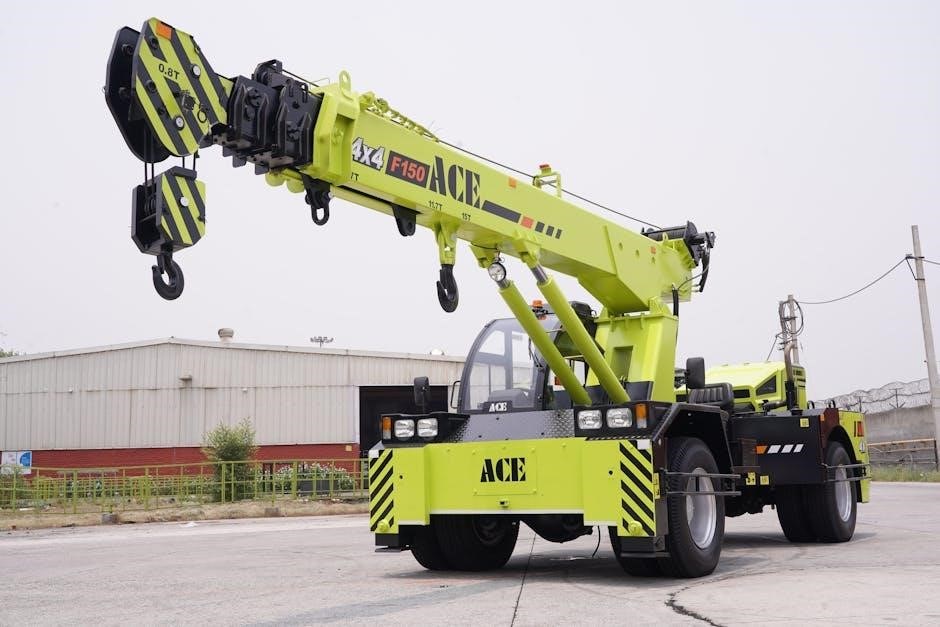Converting PDFs to CBR or CBZ formats unlocks a better comic reading experience, especially on dedicated devices, offering optimized viewing and library management.
Today is 11/19/2025 19:52:53 (). This conversion streamlines digital comic collections, enhancing portability and organization for enthusiasts.
What are CBR and CBZ Files?
CBR (Comic Book RAR) and CBZ (Comic Book ZIP) are archive file formats specifically designed for storing and reading digital comics. Think of them as containers holding all the comic’s image files – essentially, each page is an image, bundled together. CBR files utilize the RAR archive format for compression, while CBZ employs the more common ZIP format.
These formats are incredibly popular amongst digital comic readers because they support metadata tagging, allowing for easy organization by title, author, and other relevant information. Comic book reader applications readily recognize and display CBR and CBZ files, presenting a visually appealing and user-friendly reading experience. They offer a compact way to store large comic collections, saving valuable disk space.
Why Convert PDF to CBR/CBZ?
Converting PDFs to CBR or CBZ unlocks a superior digital comic reading experience. PDFs, while versatile, aren’t optimized for sequential art viewing. CBR/CBZ formats are specifically tailored for comics, offering features like panel-by-panel navigation and optimized image display.
Dedicated comic book reader apps fully support these formats, providing a cleaner, more immersive reading experience than attempting to read a PDF. Furthermore, CBR/CBZ files facilitate easier library management, metadata tagging, and compatibility with e-readers and tablets. This conversion streamlines your collection, enhancing portability and organization for comic enthusiasts seeking a dedicated reading solution.

Tools for Conversion
Several powerful tools facilitate PDF to CBR/CBZ conversion, ranging from comprehensive software like Calibre to command-line utilities such as Comic2PDF and convenient online websites.
Calibre: A Comprehensive Solution
Calibre stands out as a remarkably versatile and free ebook management software, offering robust PDF to CBR/CBZ conversion capabilities. It’s a one-stop solution for organizing, converting, and reading digital content.
Beyond simple conversion, Calibre allows for extensive metadata editing, format adjustments, and device synchronization. Its user-friendly interface simplifies the process, even for beginners. You can easily add PDF files, select the desired output format (CBR or CBZ), and customize conversion settings.
Calibre’s strength lies in its ability to handle large libraries and perform batch conversions, saving significant time and effort. It supports a wide range of input and output formats, making it a truly comprehensive tool for any digital comic enthusiast.
Comic2PDF: Command-Line Power
Comic2PDF is a powerful, command-line tool specifically designed for converting CBR and CBZ files into PDF format, and can also handle PDF to CBR/CBZ conversions with some scripting. It excels in automation and offers precise control over the conversion process.
Unlike GUI-based tools, Comic2PDF operates through text commands, making it ideal for batch processing and integration into automated workflows. Users specify input files and output directories directly in the command line.
While requiring some technical proficiency, Comic2PDF provides superior flexibility and efficiency for experienced users. It’s particularly useful for converting large collections of comics quickly and consistently, offering a streamlined approach to digital comic management.
Online Conversion Websites
Numerous online conversion websites offer a convenient, albeit potentially less private, method for transforming PDF files into CBR or CBZ formats. These platforms typically feature a simple upload-and-convert interface, requiring no software installation.
Popular options often support batch conversions and offer various output settings, though limitations on file size or the number of daily conversions may apply. Be mindful of privacy concerns when uploading sensitive content to these services.
While easy to use, online converters generally lack the advanced customization options found in dedicated software like Calibre or Comic2PDF. They are best suited for occasional, straightforward conversions when speed and simplicity are paramount.

Using Calibre for Conversion
Calibre provides a user-friendly interface for converting PDFs to CBR or CBZ, offering extensive customization options for output quality and metadata management.
Installing Calibre
Calibre installation is straightforward across various operating systems. For Windows, download the installer from the official Calibre website (calibre-ebook.com) and follow the on-screen instructions; it’s a standard executable installation process.
macOS users can download a DMG file, which mounts as a virtual drive, allowing a simple drag-and-drop installation into the Applications folder. Linux installation varies by distribution; typically, Calibre is available through package managers like apt or yum, simplifying the process with a single command.
Post-installation, launch Calibre to initialize the library and configure preferences. Ensure you have sufficient disk space for storing converted comic files. A successful installation provides a robust platform for managing and converting PDFs to CBR or CBZ formats.

Adding PDF Files to Calibre
To begin, launch Calibre and locate the “Add books” button in the top-left corner. Clicking this presents several options for importing your PDF files. You can add individual files, entire folders, or even import from URLs.
Selecting “Add books from a single directory” is ideal for bulk importing comics. Navigate to the folder containing your PDFs and select it. Calibre will then scan and add each PDF as a separate book entry in your library.
Alternatively, drag and drop PDF files directly onto the Calibre interface; Once added, Calibre organizes them, allowing you to view metadata and prepare for conversion to CBR or CBZ formats.
Converting to CBR Format
With your PDF files imported into Calibre, select the desired books you wish to convert. Then, click the “Convert books” button. In the conversion window, choose “CBR” as the output format from the dropdown menu on the right-hand side.
Calibre automatically handles the necessary compression using RAR for the CBR format. You can adjust various conversion settings, such as page size and margins, under the “Look & Feel” section if needed. However, the default settings usually suffice for a good result.
Finally, click “OK” to start the conversion process. Calibre will create CBR files in your designated library folder, ready for viewing on your preferred comic reader;
Converting to CBZ Format
Similar to CBR conversion, begin by selecting the PDF files within your Calibre library that you want to transform. Initiate the conversion process by clicking the “Convert books” button. In the conversion dialogue box, this time select “CBZ” as your desired output format from the right-hand panel’s dropdown list.
Calibre utilizes ZIP compression when creating CBZ files. As with CBR, you have the option to fine-tune conversion settings under the “Look & Feel” tab, adjusting parameters like page dimensions and margins. Default settings generally provide satisfactory outcomes.
Confirm your selections by clicking “OK” to commence the conversion. Calibre will generate CBZ files within your specified library directory, prepared for enjoyment on your chosen comic book reader application.

Utilizing Comic2PDF (Command Line)
Comic2PDF offers powerful, scriptable conversion from CBR/CBZ to PDF via the command line, providing flexibility and automation for bulk processing of comic files.
Installation and Setup
Before utilizing Comic2PDF, proper installation and setup are crucial for seamless operation. The process varies depending on your operating system. For Windows users, downloading the pre-compiled binaries is generally the easiest approach; ensure you add the directory containing comic2pdf.exe to your system’s PATH environment variable.
Linux users can often install Comic2PDF directly through their distribution’s package manager (e.g., apt, yum, pacman). Alternatively, building from source is possible, requiring Python and associated dependencies. macOS users can leverage Homebrew for a straightforward installation.
Verify the installation by opening a terminal or command prompt and typing comic2pdf –version. A successful installation will display the Comic2PDF version number, confirming it’s correctly configured and ready for use.
Basic Conversion Command
The fundamental command for converting CBR or CBZ files to PDF using Comic2PDF is remarkably straightforward. Simply type comic2pdf input.cbz output.pdf (or comic2pdf input.cbr output.pdf) in your terminal or command prompt. Replace “input.cbz” or “input.cbr” with the actual filename of your comic archive.
Similarly, substitute “output.pdf” with your desired output filename. Comic2PDF automatically detects the archive type (CBR or CBZ) and extracts the images, intelligently arranging them into a multi-page PDF document. This basic command handles most common scenarios effectively.
Ensure that both the input archive and the desired output location are accessible from your current working directory, or specify full paths for clarity and to avoid potential errors.
Specifying Output Directory
To control where Comic2PDF saves the converted PDF files, utilize the -o or --output flag followed by the desired directory path. For instance, comic2pdf input.cbz -o /path/to/output/directory output.pdf will place the resulting PDF within the specified folder.
This is particularly useful when processing multiple files, allowing you to maintain an organized file structure. Remember that the output directory must already exist; Comic2PDF will not create it automatically. If the path contains spaces, enclose it in quotes.
Using absolute paths (starting from the root directory) is recommended for consistency, but relative paths (relative to your current working directory) are also supported.
Handling Multiple Files
Comic2PDF excels at batch conversion, effortlessly processing numerous CBR or CBZ files simultaneously. Simply list the file paths as arguments to the command. For example, comic2pdf file1.cbz file2.cbr file3.cbz will convert all three comics in sequence.
The order of files matters; they will be converted in the order they are listed. Combining this with output directory specification (using the -o flag) ensures a neatly organized output.
For even greater flexibility, you can utilize wildcards to select files based on patterns, such as comic2pdf *.cbz to convert all CBZ files in the current directory.

Bash Scripting for Automated Conversion
Automated conversion streamlines workflows, enabling efficient batch processing of comics using Bash scripts and command-line tools like Comic2PDF for PDF to CBR/CBZ.
Example Bash Script
Here’s a basic Bash script demonstrating automated conversion. This script iterates through all CBR and CBZ files within a specified directory, converting each one to PDF using the comic2pdf command. It assumes comic2pdf is installed and accessible in your system’s PATH.
#!/bin/bash
input_dir="/path/to/comics"
output_dir="/path/to/pdfs"
mkdir -p "$output_dir"
for file in "$input_dir"/.cbr "$input_dir"/.cbz; do
# Extract the filename without extension
filename=$(basename "$file" .cbr)
filename=$(basename "$filename" .cbz)
# Construct the output PDF filename
output_file="$output_dir/${filename}.pdf"
# Convert the file using comic2pdf
comic2pdf "$file" "$output_file"
echo "Converted: $file to $output_file"
done
Remember to replace /path/to/comics and /path/to/pdfs with your actual directory paths.
Script Explanation
The script begins by defining the input and output directories, ensuring the output directory exists using mkdir -p. It then loops through all files ending in .cbr or .cbz within the input directory. Inside the loop, basename extracts the filename without the extension, preparing it for the output PDF name.
The comic2pdf command is then executed, taking the input CBR/CBZ file and constructing the corresponding PDF output path. A confirmation message is printed to the console for each successful conversion. This automated process simplifies batch conversion, saving time and effort compared to manual operations. The script relies on the globally available comic2pdf utility.
Error Handling in Scripts
Robust scripting demands error handling. The provided Bash script can be enhanced to check the return code of the comic2pdf command using $?. A non-zero return code indicates a conversion failure, triggering an error message. Implementing this allows the script to gracefully handle problematic files instead of halting abruptly.
Further improvements include checking for the existence of the input files before attempting conversion, and verifying that comic2pdf is installed. Logging errors to a file provides a record for debugging. Proper error handling ensures the script’s reliability and provides informative feedback during automated PDF to CBR/CBZ conversions.

Comparing CBR and CBZ Formats
CBR utilizes RAR compression, offering slightly better compression ratios, while CBZ employs ZIP, ensuring wider compatibility across various devices and platforms.
CBR: Compressed RAR Archive
CBR files represent comics archived using the RAR compression format. This method generally achieves a higher compression rate compared to ZIP, resulting in smaller file sizes for the same comic content. However, this benefit comes with a trade-off: RAR is not as universally supported as ZIP.
Users often need to install dedicated software, like WinRAR or The Unrar Boy, to open and extract CBR files. While the compression efficiency is advantageous for storage, the dependency on specific software can be a drawback for portability and ease of access across different devices.
Despite this, CBR remains a popular choice among comic enthusiasts prioritizing smaller file sizes and willing to manage the software requirement. The format effectively bundles all comic pages and associated metadata into a single, compressed archive.
CBZ: Compressed ZIP Archive
CBZ files utilize the widely supported ZIP archive format to store comic book content. This makes them incredibly accessible, as most operating systems have built-in ZIP extraction capabilities, eliminating the need for specialized software. This broad compatibility is a significant advantage for users sharing or accessing comics across various platforms.

While ZIP compression typically results in slightly larger file sizes compared to RAR (CBR), the convenience and universal support often outweigh this difference. CBZ files are easily opened on smartphones, tablets, computers, and e-readers without requiring additional installations.
Essentially, a CBZ file is a renamed ZIP archive containing comic images, ensuring seamless viewing and management for a wider audience.
Which Format is Better?
Determining the “better” format – CBR or CBZ – depends on individual priorities. CBR, using RAR compression, generally achieves smaller file sizes, beneficial for storage-constrained devices or limited bandwidth. However, RAR requires specific software for extraction, potentially creating accessibility hurdles.
CBZ, leveraging the ubiquitous ZIP format, prioritizes convenience and compatibility. While files might be marginally larger, the widespread support across operating systems and devices eliminates the need for extra software installations. This makes CBZ ideal for sharing and broader accessibility.
Ultimately, CBZ often proves more practical for most users due to its ease of use, while CBR remains a viable option for those prioritizing maximum compression.

Troubleshooting Common Issues
Addressing conversion errors, file compatibility problems, and image quality concerns are crucial for a smooth PDF to CBR/CBZ experience, ensuring optimal results.
Conversion Errors
Encountering conversion failures can stem from several sources. Corrupted PDF files are a primary culprit, often resulting in incomplete or unreadable CBR/CBZ outputs. Insufficient system resources, like RAM or disk space, can also interrupt the process, especially with large or complex PDFs.
Furthermore, issues with the conversion tool itself – outdated software or conflicting plugins – may trigger errors. Permissions problems, preventing the tool from accessing or writing files, are another common cause. Examining error messages provided by the software is vital; they often pinpoint the specific problem. Trying a different conversion tool or updating the current one can frequently resolve these issues. Finally, ensure the PDF isn’t password-protected, as this will block conversion.

File Compatibility
PDF files, while generally universal, exhibit compatibility variations. PDFs created with specific software or containing unusual fonts or embedded objects might pose challenges during conversion. Older or poorly formatted PDFs are more prone to errors. CBR and CBZ formats themselves have broad compatibility with comic book reader applications on various platforms.
However, some readers may struggle with specific compression methods used within CBR/CBZ archives. Ensuring your chosen reader supports RAR (for CBR) and ZIP (for CBZ) is crucial. Occasionally, post-conversion manual adjustments within the reader might be needed to optimize display. Testing the converted file on multiple readers confirms broader compatibility.
Image Quality Problems
Image quality issues during PDF to CBR/CBZ conversion often stem from the original PDF’s resolution. Low-resolution source PDFs will inevitably result in pixelated or blurry images in the converted comic. Compression settings during conversion also play a significant role; aggressive compression reduces file size but sacrifices visual fidelity.
Calibre and Comic2PDF offer options to control image quality, allowing users to balance file size and clarity. Experimenting with different settings is key. If the original PDF contains vector graphics, these may be rasterized during conversion, potentially leading to a loss of sharpness. Always preview the converted file carefully to assess image quality.
